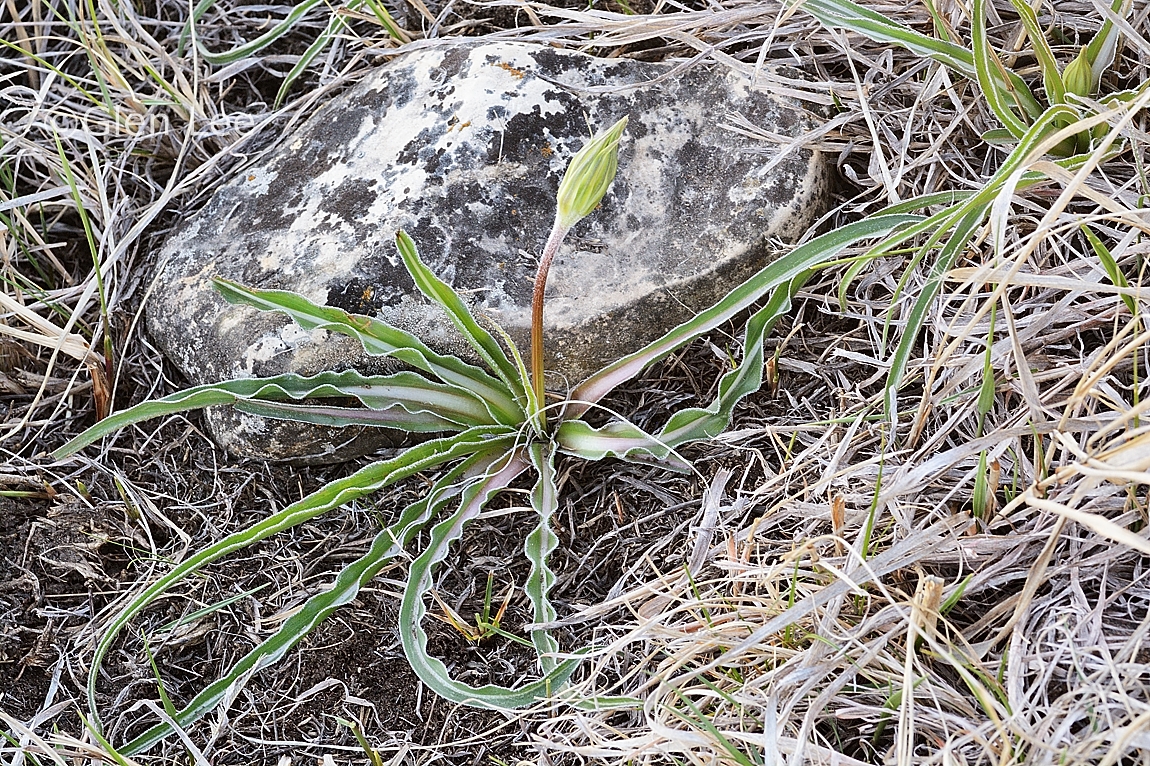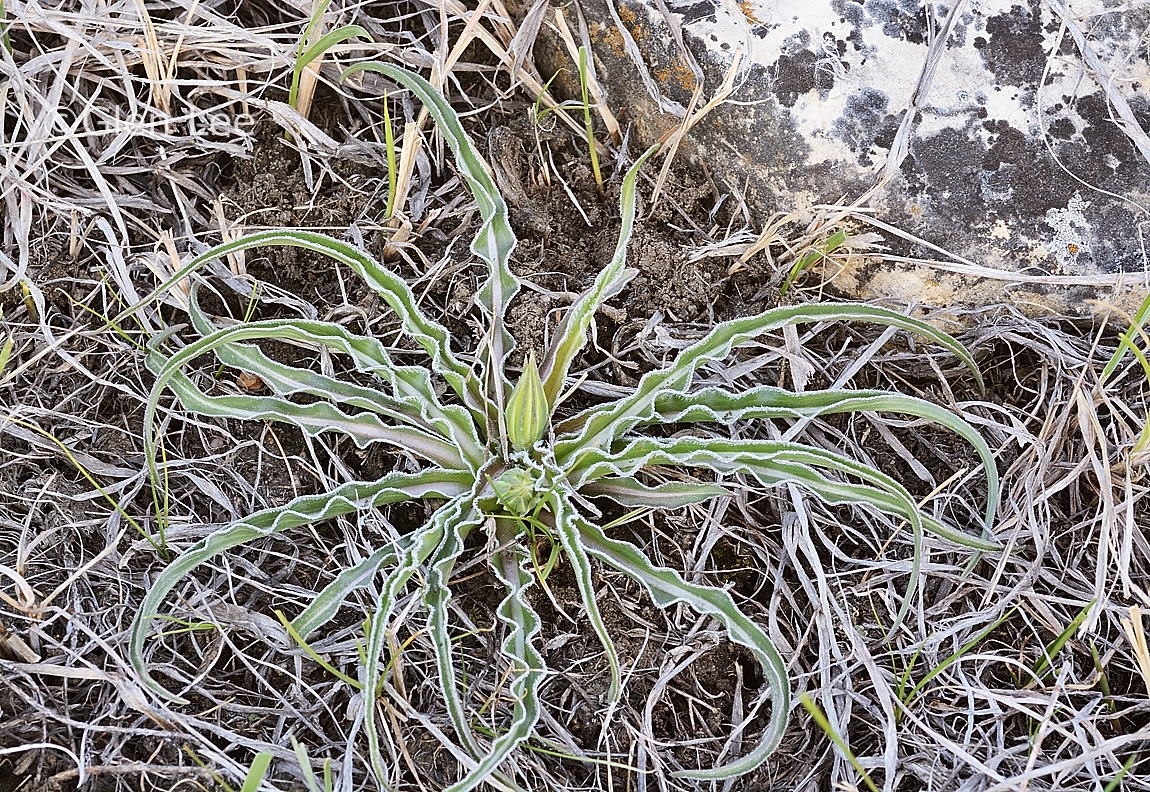Nothocalais cuspidata (Prairie False Dandelion) - photos and description











Leaves folded inward

Leaf margins with long white hairs

Leaves often crisped (irregularly curled along the margin)
 Above
plant with a flower bud yet to open
Above
plant with a flower bud yet to open

Plant with two flower buds yet to open

Origin: Native.
General: Stems simple and leafless bearing a solitary, dandelion-like flower. Stems woolly near the top.
Flowers: Flower heads bright yellow, consisting of all ray florets, with no disk florets. The ray florets having 5 teeth at the tip. Flowerheads measured to 3.5 cm in diameter. Bracts overlap like shingles, in two series.
Leaves: Leaves arebasal, linear, grey-green, we measured a leaf at 95 mm long and 7 mm wide. Leaves folded inwards, often crisped, having woolly margins, and a few hairs along leaf top and bottom.
Height: Height listed in Flora of Alberta to 30 cm, we measured flowering stems to 11 cm tall.
Habitat: Dry prairies and hillsides.
Abundance: This plant is rare, ranked as an S3 (as of 2021) by the Saskatchewan Conservation Data Centre.
Synonym: Listed in some of the field guides we use as Microseris cuspidata.
Similar species: Could be mistaken for Agoseris glauca (Common Yellow False Dandelion). However, Nothocalais cuspidata can be identified by its leaves which are folded inward, and has long white hairs on its leaf margins (Taxonomic Reminder for Recognizing Saskatchewan Plants).
When and where photographed: The above photos were taken May 7th, and May 11th, dry grassy slope, Buffalo Grass Eco Reserve, about 200 km southeast of Regina, SK, and May 5th and May 25th on a steep, grassland hillside, Qu'Appelle Valley, about 80 km west of our home in Regina, SK.